After a heavy gym session, your muscles can feel tight and achy, and a common question is, Does Stretching Help Sore Muscles? This article explains how stretching can affect delayed onset muscle soreness, increase blood flow, ease muscle tightness, and improve flexibility and range of motion, and when static or dynamic moves are more effective. Want to alleviate soreness fast, feel looser, and recover faster with safe, effective stretches you can trust? We’ll also highlight some of the best stretching exercises to help you recover and perform at your best.
To make those gains easier, Pliability's mobility app offers simple guided routines that target sore areas, boost mobility, and help you recover with clear step-by-step stretches you can use after any workout.
Does Stretching Help Sore Muscles?
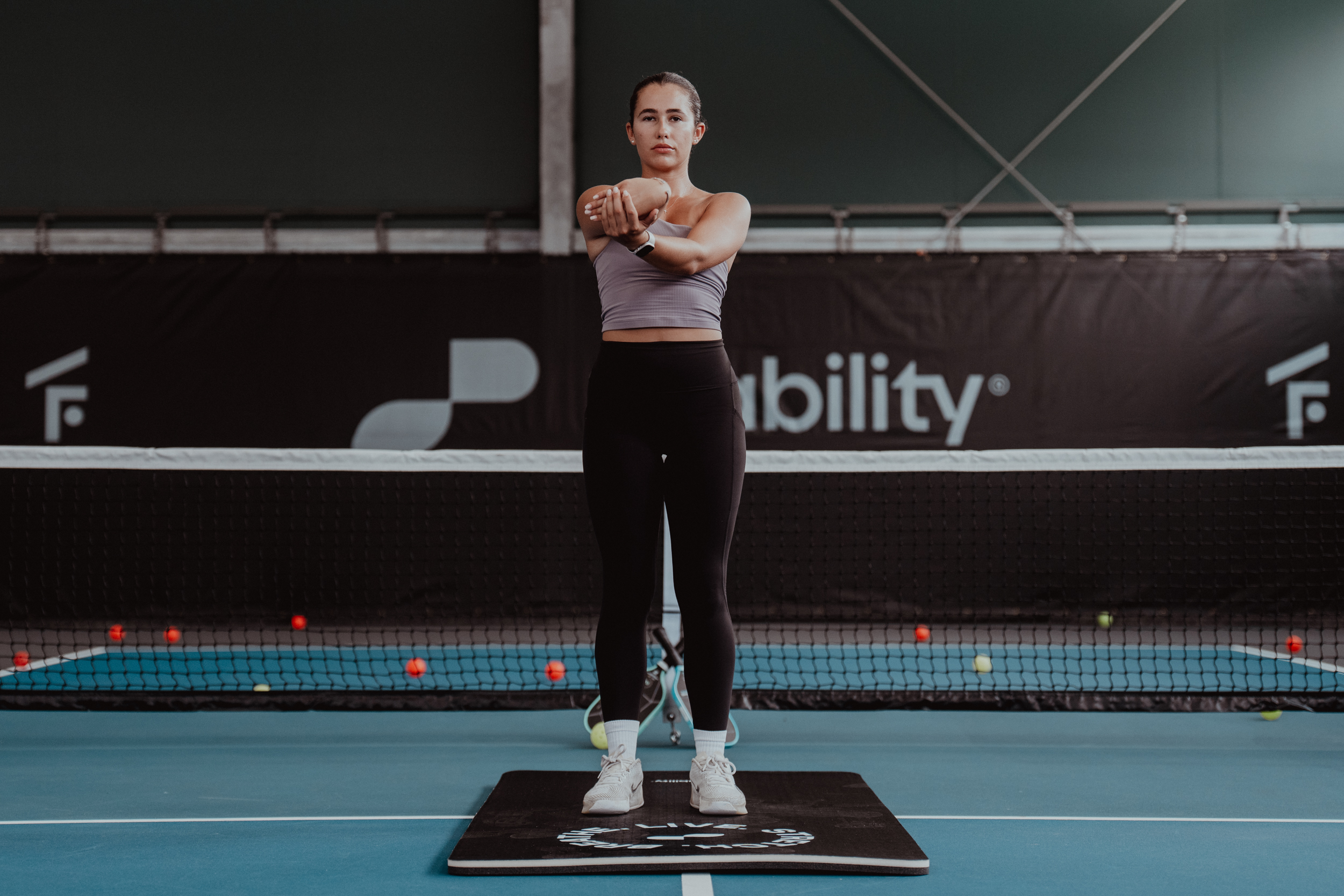
Delayed onset muscle soreness or DOMS shows up 12 to 72 hours after unaccustomed or intense exercise. It comes from microdamage to muscle fibers, especially after eccentric actions where muscles lengthen under load. That microdamage jumbles the tiny contractile threads inside muscle fibers.
As Susie Reiner, PhD, puts it, “all of the actin and myosin are jumbled together,” and the body mounts an inflammatory response that increases pain and stiffness. DOMS feels like a dull ache, stiffness, reduced force production, and local tenderness. It is different from an acute strain that hurts right away or nerve pain that produces numbness or shooting sensations.
Why Your Neck Might Feel Tight After a Drive: Three Common Causes
Board-certified sports physical therapist Leada Malek, DPT, CSCS, lists three standard drivers of that post-drive neck ache. First, muscle weakness and fatigue from holding a fixed posture can make muscles feel sore and heavy. Second, muscles can shorten over time and reduce your range of motion, leaving you feeling stiff. Third, recent challenging exercise can cause microdamage and DOMS. Read those clues closely because the correct response depends on which of these is present.
What the Science Says About Stretching and Soreness
Systematic reviews and meta-analyses across sports medicine generally find that stretching has little effect on preventing DOMS and only minor short-term effects on reducing soreness after exercise. Any pain reduction tends to be modest and often not clinically meaningful.
At the same time, some studies and clinicians report immediate relief from gentle stretches because stretching can increase blood flow, warm tissue, and alter the way the nervous system perceives pain.
Experts Point to Both Sides
Mathew Welch, MS, CSCS, ATC, notes that gentle movement raises temperature and eases tension, while Susie Reiner warns that aggressive stretching on damaged fibers can make microdamage worse. Evidence and clinical experience together mean stretching can help in some instances, but it is not a reliable cure for DOMS.
Static Versus Dynamic Stretching: How Each Works and When to Use Them
Static stretching holds a muscle at a length for a set time, usually 15 to 30 seconds. It can increase short-term flexibility and, when done gently, improve momentary range of motion. Dynamic stretching uses controlled movement to take joints through their range and activate the nervous system and muscle coordination.
For warm-ups, dynamic movement is the better choice because it prepares muscles for work without reducing power. For tightness due to shortened muscles, regular static holds can preserve the range of motion. For DOMS from microdamage, static stretching is unlikely to pull those jumbled actin and myosin apart and could cause more damage if you push too hard.
Common Misconceptions About Stretching Sore Muscles
Myth: Stretching prevents DOMS. Evidence does not support that.
Myth: If something hurts, stretching will help. Stretching can aggravate acute strains or nerve compression. Mathew Welch says that if muscle fibers have been overstretched during activity, “adding more pulling tension on the muscle fibers is only going to exacerbate what’s going on.”
Myth: More stretching is always better. Chasing a stretch that only helps briefly suggests you need other interventions, such as strengthening or mobility work. As Dr. Malek puts it, “If you find a stretch that actually offers relief and doesn’t feel like you have to keep chasing it with more stretches, then that’s a good thing to keep in your routine.”
How to Tell Whether Soreness Is Weakness, Tightness, or Microdamage
Ask simple questions and test:
- Does the area feel heavy or hard to hold up? That suggests weakness or fatigue.
- Does a gentle, well-tolerated stretch immediately increase your range of motion and reduce stiffness? That suggests tightness.
- Did the pain start during or right after a specific movement with a sharp thud? That suggests an acute strain.
- Does the ache come on a day or two after a novel workout and feel diffuse and stiff? That pattern fits DOMS.
Try a Short Test
Do a few dynamic movements and a gentle static stretch. If mobility improves and the relief lasts, tightness is likely; if relief is brief or pain increases, consider strength work or professional evaluation.
When Stretching Is Not a Good Idea: Red Flags to Watch
Do not stretch aggressively after an acute muscle strain or when you have nerve signs such as numbness, pins and needles, or shooting pain. If stretching increases sharp pain or you feel a new tear or pop, stop and seek assessment. Be cautious with chronic joint disease; stretching may need modification, and adding strengthening is often more helpful.
Avoid massage guns on the neck since sensitive structures like arteries and lymph nodes sit close to the surface. If daily function is impaired and self-care does not help, consult an orthopedic physician or physical therapist.
Alternative and Complementary Tools for Sore Muscles
If stretching is not the right tool, use options that increase circulation and reduce stiffness. Heat raises tissue temperature and can ease tightness when used sensibly. Foam rolling and manual therapy provide compression, increase blood flow, and improve mobility.
Susie Reiner recommends pneumatic compression or walking for DOMS, noting that gentle movement, such as easy cycling or swimming, can reduce soreness. For short-term relief from fatigue-related soreness, massage tools can help, but you still need to address underlying strength deficits.
Practical Decision Rules: When to Stretch and How to Do It Safely
If a stretch feels comfortable and increases the range of motion without sharp pain, try it. Keep static holds gentle, 15 to 30 seconds, and stop if you feel worse. Use dynamic movement as a warm-up when muscles are tired or when you need to activate the nervous system.
For weak or fatigued muscles, choose short sets of strengthening instead of sustained static stretching. For DOMS, favor active recovery such as walking, cycling, or swimming over aggressive stretching because light activity helps circulation without stretching damaged fibers.
A Simple Short Routine You Can Use When Your Neck Is Stiff After Sitting
Start with mobility and activation rather than hard stretching. Do 8 to 10 chin tucks, 8 to 10 slow neck rotations within a pain-free range, and 10 scapular squeezes to engage the upper back.
Follow with a gentle lateral neck glide held for 15 seconds on each side only if it feels easing and not painful. If the neck feels heavy and hard to hold up, add isometric neck strengthening against the hand for two sets of 10 seconds each. Avoid pushing deep static holds into pain.
Quick Checks You Can Run Right Now to Guide Action
Try a gentle active motion and then a static stretch for the same muscle. If active motion improves control and the stretch gives only temporary relief, consider a short targeted strength program. If static stretching increases range and comfort with a lasting effect, add regular mobility work. If any sharp or radiating pain appears, stop and seek medical input.
“If stretching for a few minutes allows you to take time to center yourself and take some deep breaths, that alone can actually impact pain signals,” says Leada Malek, DPT.
“All of the actin and myosin are jumbled together,” Susie Reiner, PhD, explains about the microdamage of DOMS.
“Adding more pulling tension on the muscle fibers is only going to exacerbate what’s going on,” Mathew Welch warns about stretching on an acute strain.
“If you find a stretch that actually offers relief and doesn’t feel like you have to keep chasing it with more stretches, then that’s a good thing to keep in your routine,” notes Leada Malek, DPT.
Related Reading
- Why Does Stretching Feel Good
- Does Stretching Burn Calories
- Most Important Muscles for Golf
- Why Do Athletes Stretch Before a Game
- Does Stretching Build Muscle
- Stretches to Do Before Working Out
- Leg Stretches Before Workout
- Full Body Stretching Routine
- Golf Stretching Routine
- Chest Stretches After Workout
6 Stretches to Help Beat DOMS and Tight Muscles
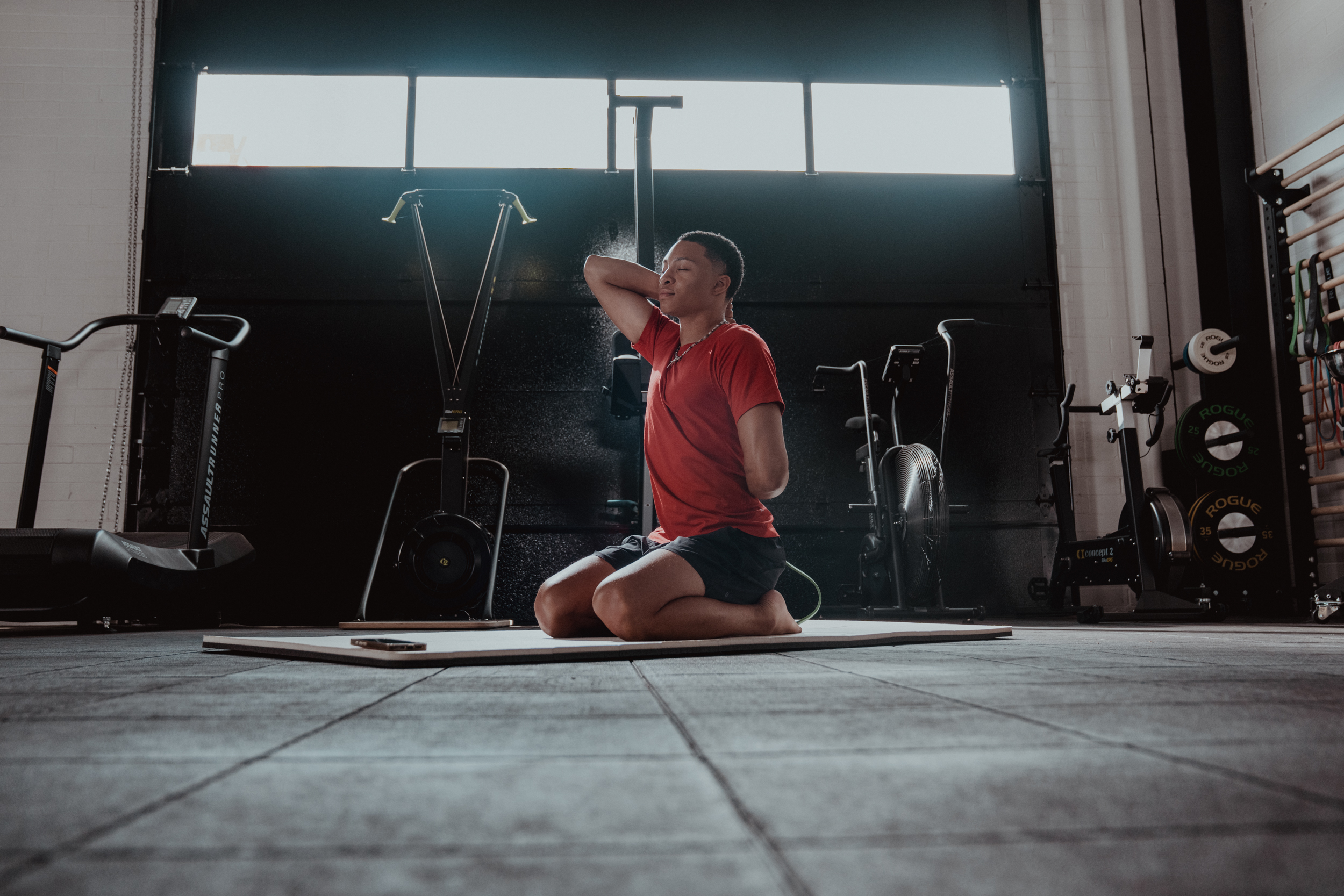
1. Pigeon Pose: Deep Hip and Glute Release
Start in a plank with palms on the ground. Gently bring your left knee forward toward your chest. Bend the left leg and place it on the ground in front of you so the left shin aims roughly perpendicular to your torso.
Drop your hips down, keep the right leg straight behind you, and lean forward, moving your chest closer to the ground until you feel a solid stretch in the hips and glutes. Hold 20 seconds, then switch sides.
Muscles Involved
Targets the gluteus maximus and medius, piriformis, and external hip rotators. The back leg will also stretch the hip flexors a little.
Safety Cues to Avoid Strain
If your front knee hurts, bring the front foot closer to your body so the shin is less than perpendicular. Place a folded towel or cushion under the front hip for support. Keep hips squared to the front and avoid forcing a deeper fold if you feel sharp pain in the knee or low back. Breathe steadily and ease out if numbness or tingling appears.
2. Lying Hamstring Stretch: Gentle Back of Thigh Release
Lie on your back with arms relaxed at your sides. Lift your right leg and hold the thigh either above or below the knee. Gently pull the thigh toward you so the hamstring lengthens. Keep the left leg relaxed on the floor. Hold 20 seconds and then swap sides.
Muscles Involved
Works the hamstring group:
- Biceps femoris
- Semitendinosus
- Semimembranosus
It also relieves tension that can affect the lower back and pelvic tilt.
Safety Cues to Avoid Strain
Do not yank on the knee. If your lower back lifts off the floor or you feel pain there, bend the lifted knee slightly or use a strap around the foot to reduce the pull. Move until you feel a firm but comfortable stretch, and avoid forcing a straight leg if hamstrings are very tight.
3. Wall Shoulder Rotation: Restore Shoulder Mobility and Reduce Pain
Stand with your back near a wall. Bring both arms out to your sides and bend elbows to about 90 degrees with forearms against the wall. Slide your left arm upward along the wall so the back of the left hand stays in contact.
At the same time, slide the right forearm down so the palm stays on the wall. Keep elbows roughly at 90 degrees and move slowly. Reverse the motion and switch arms.
Muscles Involved
Mobilizes the rotator cuff group, posterior shoulder, deltoids, and scapular stabilizers. It helps reduce shoulder stiffness and tension that contribute to pain.
Safety Cues to Avoid Strain
If raising the arm causes sharp pain, reduce the range of motion and move more slowly. Keep the neck relaxed and avoid shrugging shoulders. Maintain a neutral spine and stop if you feel catching or sharp pinching in the joint.
4. Overhead Triceps Stretch: Release the Back of the Upper Arm
Stand tall or sit up straight. Reach your left arm overhead and bend at the elbow, placing your left hand on your upper back. Use your right hand to gently press down on the left elbow, sliding the left hand down toward the middle of your back. Hold about 20 seconds, repeat three times per side.
Muscles Involved
Stretches the triceps brachii and offers secondary lengthening for the latissimus dorsi and shoulder capsule, which can help with arm mobility and ease muscle tension.
Safety Cues to Avoid Strain
Keep your neck relaxed and avoid tugging. If the shoulder joint feels unstable or painful, reduce the pressure on the elbow or perform the stretch with a towel behind the back to bridge the gap. Do not force beyond a comfortable range.
5. Calf Towel Stretch: Increase Ankle Flex and Reduce Calf Tightness
Sit on the floor with legs extended. Loop a small towel around the ball of your left foot. Hold an end of the towel in each hand and gently pull the foot toward you while keeping the leg and back straight. Hold 30 seconds, then slowly release and repeat on the other side.
Muscles Involved
Targets the gastrocnemius and soleus muscles and the Achilles tendon. This stretch improves ankle dorsiflexion and can reduce calf cramping and post-workout stiffness.
Safety Cues to Avoid Strain
If your knee locks, allow a tiny bend. Do not pull so hard that your toes hyperextend or that you round your lower back. Use a strap or band if you cannot reach the foot. Move gently to avoid acute pain in the calf or Achilles.
6. Kneeling Quad Stretch: Front Thigh and Hip Flexor Lengthener
Begin in a lunge with the right foot forward and the back knee down on the ground. Reach back with your left hand and take hold of your left foot. Gently pull the left foot toward your glutes and lean forward slightly until you feel the stretch along the front of the thigh. Hold around 30 seconds, then return to the start and switch sides.
Muscles Involved
Stretches the quadriceps, including rectus femoris, and the hip flexors, such as the iliopsoas. It helps relieve front thigh tightness that affects posture and knee comfort.
Safety Cues to Avoid Strain
Place padding under the back knee. Keep the pelvis neutral and avoid overarched the lower back. Ensure the front knee stays aligned over the ankle and stop if you feel knee joint pain or sharp discomfort.
Related Reading
- Dynamic Stretches Before Workout
- Golf Stretches for Seniors
- Stretches for Weightlifting
- Stretches Before Bench Press
- Stretching for Runners
- Pre Golf Stretches
- Static Stretches for Football
- Golf Shoulder Stretches
- Golf Stretches for Back
- Golf Stretches for Rotation
- Stretching for Bodybuilders
- Stretches for Gymnastics
Is It Bad to Work Out When You’re Sore?
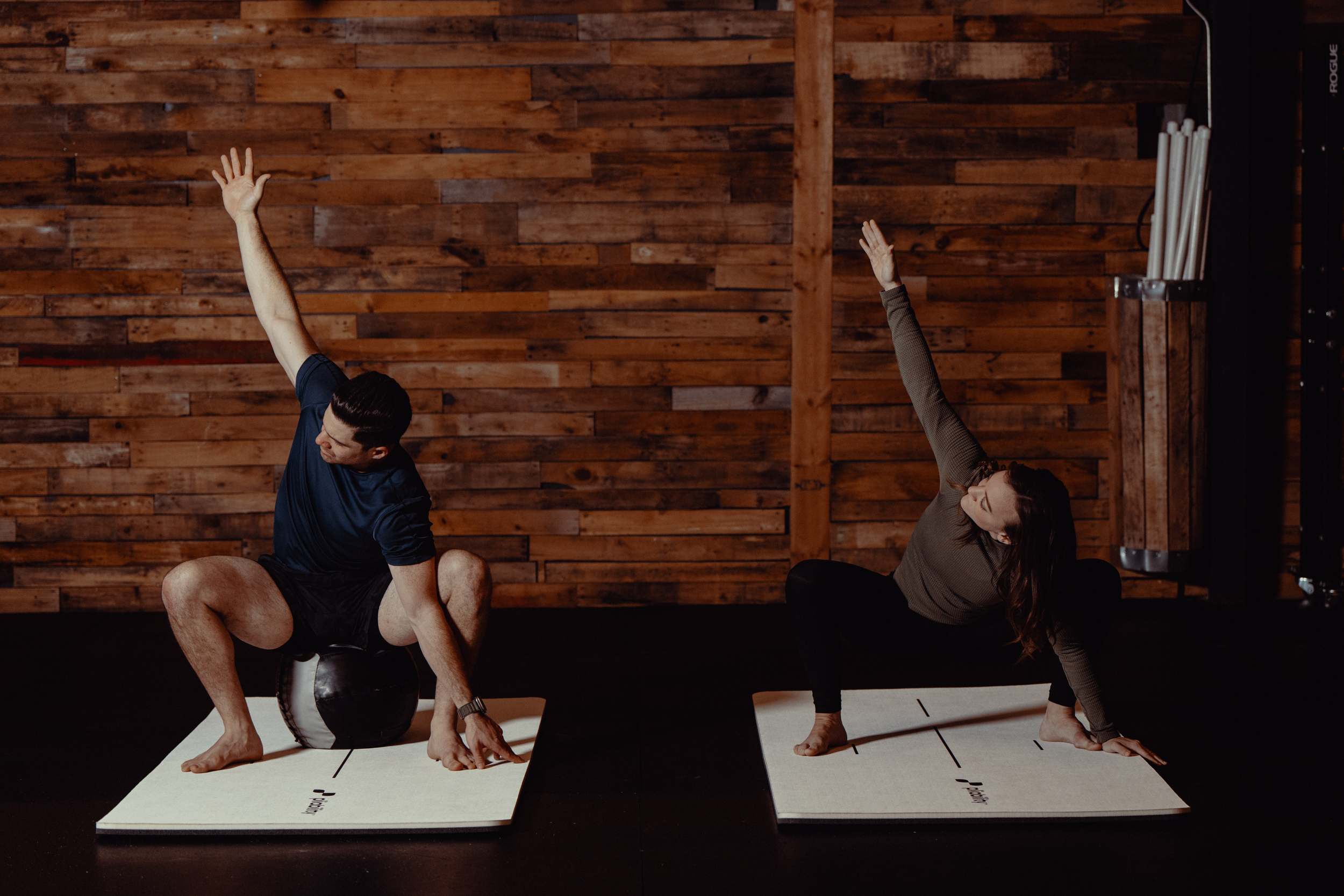
Post-workout muscle soreness, often called delayed onset muscle soreness or DOMS, feels like a dull ache, stiffness, or tightness that develops 24 to 48 hours after exercise. Pain from injury is sharp, stabbing, burning, or causes an apparent loss of normal movement.
Watch for swelling, bruising, joint instability, sharp pain with specific movements, or an inability to bear weight or move naturally. If pain gets worse during activity or does not improve over a few days, see a clinician. If symptoms last two weeks or more, consult a doctor or physical therapist.
The Warm-Up Test: A Simple Rule to Decide If You Should Train
Try this before you book a HIIT class. Do a complete warm-up that raises heart rate and moves the sore area through a comfortable range of motion. If the ache eases and you feel more mobile and less worn out, your muscles are adapting, and you can likely proceed with exercise.
If soreness persists or sharp sensations remain after the warm-up, dial back, switch to a different focus, or rest that day. Do you feel looser after five to ten minutes of movement? If so, a smart session is reasonable.
When It’s Safe to Exercise While Sore and When to Rest
You can train with mild DOMS if:
- The soreness is diffuse, not localized to a joint or tendon
- Warm-up reduces the discomfort
- You can use proper form without compensation
Rest or stop when:
- Pain is sharp, sudden, or increases with movement.
- You see swelling, bruising, or loss of range of motion
- You feel unusually exhausted, dizzy, or your performance drops dramatically.
If you are unsure, pick a lower intensity or an alternate muscle group instead of pushing through high intensity.
How to Adjust Intensity and Type of Exercise While Sore
Reduce load and volume. Lower weights, drop sets, and cut total reps or time. Prioritize technique and controlled tempo. Swap heavy compound lifts for bodyweight or single joint work if soreness comes from prior heavy sessions.
Choose lower-impact and lower eccentric demand movements when muscles are taxed. For example, replace heavy squats with a low‑impact bike ride or swimming. Keep intensity moderate and monitor pain signals.
Ask yourself: Can I move through the intended motion with good form and pain only as mild discomfort? If not, scale back.
Active Recovery That Helps Muscle Recovery
Active recovery improves circulation and helps clear metabolic waste from sore tissue. Gentle movement increases blood flow, reduces stiffness, and speeds the return of range of motion. Good options:
- Walking for 20 to 30 minutes
- Light cycling or a low resistance spin
- Swimming or pool work that uses muscles differently
- Mobility drills and dynamic stretching that move joints through a full range
- A short, easy yoga flow focused on breath and mobility
Foam Rolling, Massage, and Manual Work for Sore Muscles
Self-massage and foam rolling apply light to moderate pressure over sore areas and can reduce tight spots and trigger points. Use slow rolls and pause on tender spots for 20 to 60 seconds. A professional massage or targeted soft tissue work reduces tension and helps alignment. Treat this as recovery stimulation, not a breakdown session. If rolling causes sharp pain, stop and reassess.
Stretching and Mobility: Static Versus Dynamic
Dynamic stretching moves muscles and joints through their available range and helps pump fluid and blood through tissues. Use dynamic moves in warm-ups and active recovery.
Static stretching is a functional post activity to improve flexibility and soothe tight muscles when held comfortably for 30 to 60 seconds. Both help manage soreness and restore range of motion. If stretching reduces discomfort, keep it in your routine.
Working Other Muscle Groups and Smart Programming
Train around sore areas by working opposing or unrelated groups. If your legs are aching, focus on upper body exercises, such as pushing and pulling, core work, or low-impact cardio. Structure your week to alternate muscle groups:
- Upper body one day
- Lower body, the next
- Then a mobility day
Use opposing cardio choices to vary loading, for example, run one day and swim the next, program deload or lighter weeks periodically to reduce cumulative fatigue.
Four Practical Ways to Relieve Sore Muscles
- Active recovery: Move gently to increase circulation and reduce inflammation. Try a 20-minute walk or a mobility routine that targets the sore region.
- Foam roll or massage: Apply controlled pressure to release tight spots and improve tissue quality. Spend focused time on knotted areas but avoid deep, painful assaults.
- Stretching and dynamic movement: Use dynamic stretching in the warm-up and gentle static holds later to restore range of motion. Move through pain-free ranges.
- Rest and passive recovery: Sleep, hydration, nutrition, and low stress let tissues rebuild. If you are exhausted or performance drops, take a full rest day and prioritize recovery.
Signs You Should See a Medical Provider
Seek evaluation when you experience persistent sharp pain, numbness, tingling, swelling, visible bruising, inability to move normally, or symptoms that worsen over days. Pain that lingers beyond two weeks after the initial incident likely needs professional assessment and targeted rehab.
Risks of Overtraining and How to Avoid Them
Overtraining produces chronic fatigue, persistent soreness, declining performance, disrupted sleep, mood changes, and higher injury risk. It can also blunt immunity and cause hormonal shifts.
Prevent overtraining by tracking training load and rate of perceived exertion, scheduling rest and deload weeks, monitoring sleep and appetite, and varying intensity and volume. If soreness becomes a constant background state rather than an occasional response, reduce frequency or intensity and consult a coach or clinician.
Practical Checklist: What to Do Today If You Squatted Hard Yesterday
- Warm up thoroughly and repeat the warm-up test
- If the ache dissipates, choose a moderate session or active recovery
- If soreness remains, switch to a non-leg day or pick a low-impact option like swimming or a mobility class
- Use foam rolling, light stretching, and good sleep to speed recovery
- If pain is sharp or mobility is limited, rest and seek assessment if it persists.
Questions for you:
- How does the soreness change during your warm-up?
- Can you maintain perfect form on a single rep of the movements you planned?
Your answers guide whether to train, recover actively, or rest.
Improve Your Flexibility with Our Mobility App Today | Get 7 Days for Free on Any Platform

Pliability packs an extensive video library that targets flexibility, mobility, recovery, and pain relief for athletes and performance-minded people. The app delivers daily updated mobility programs that adapt to your movement and your current state. Use the phone camera body scan to find tight joints and muscle restrictions, then follow guided sessions that address those exact areas.
Pliability includes short pre-workout warm-ups, longer recovery sessions, and mobility drills that build range of motion without forcing pain. Try 7 days free on iPhone, iPad, Android, or on our website and test how structured flexibility training fits your current routine.
Related Reading
- Best Stretches for Soccer Players
- Gymnastics Stretches for Beginners
- Best Golf Stretches
- Soccer Warm Up Stretches
- Dynamic Stretching for Soccer
- Best Stretches for Tennis Elbow
- Groin Stretches Football
- Hip Stretches for Golf
- Stretching Exercises for Golfers Over 60

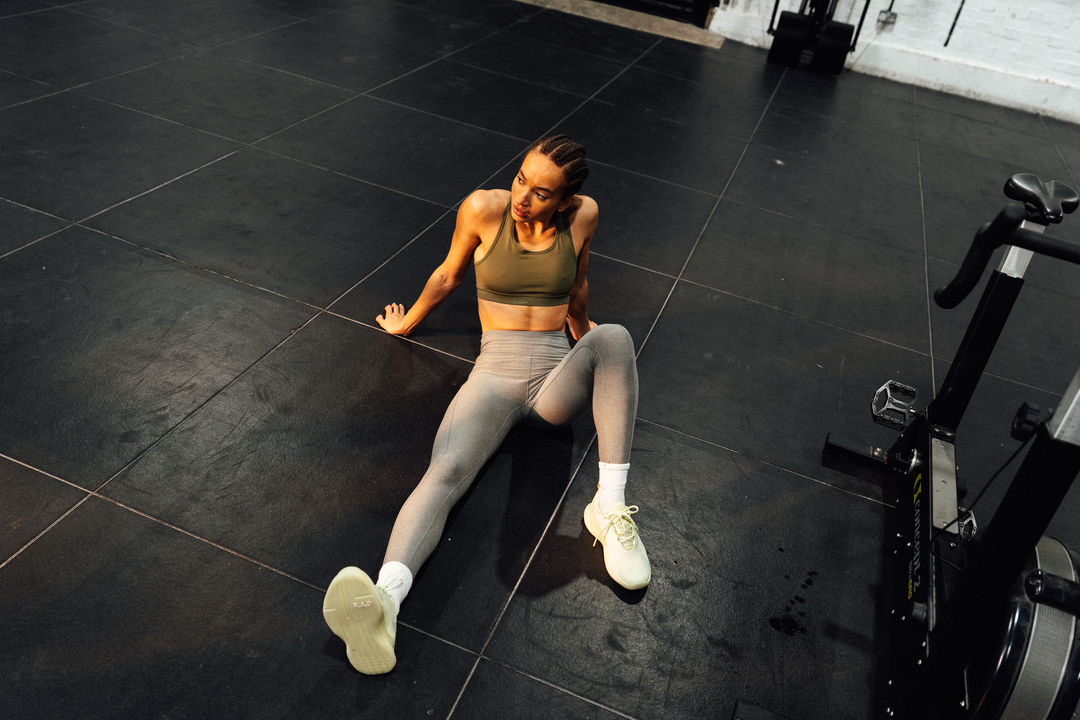

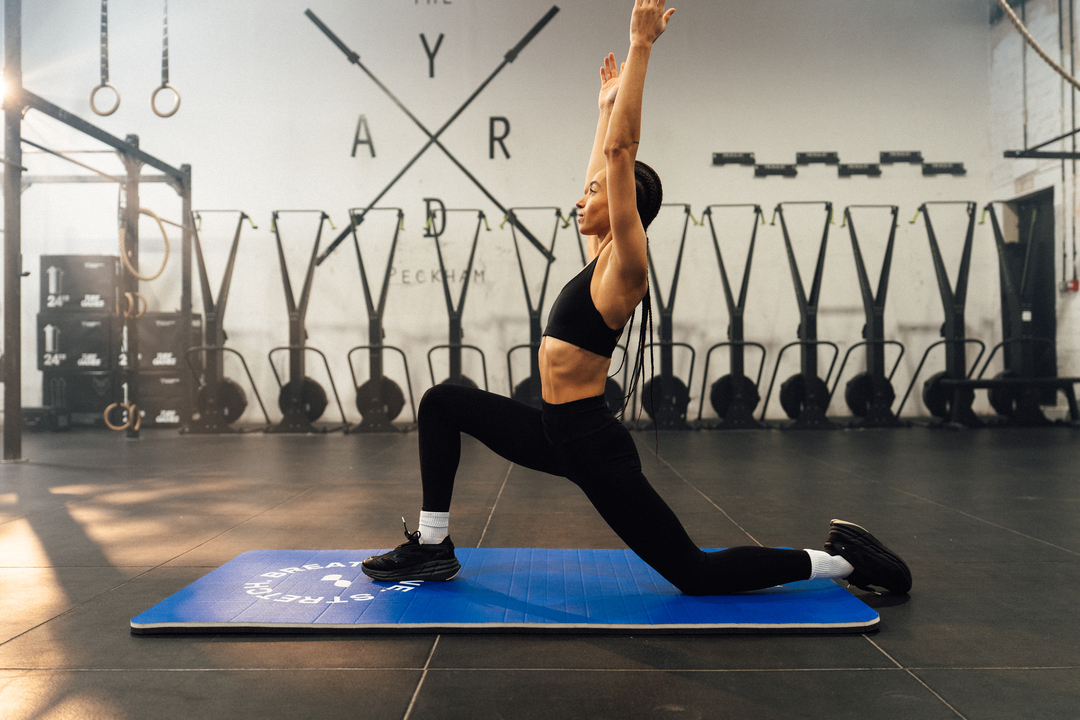
.jpg)
.jpg)


